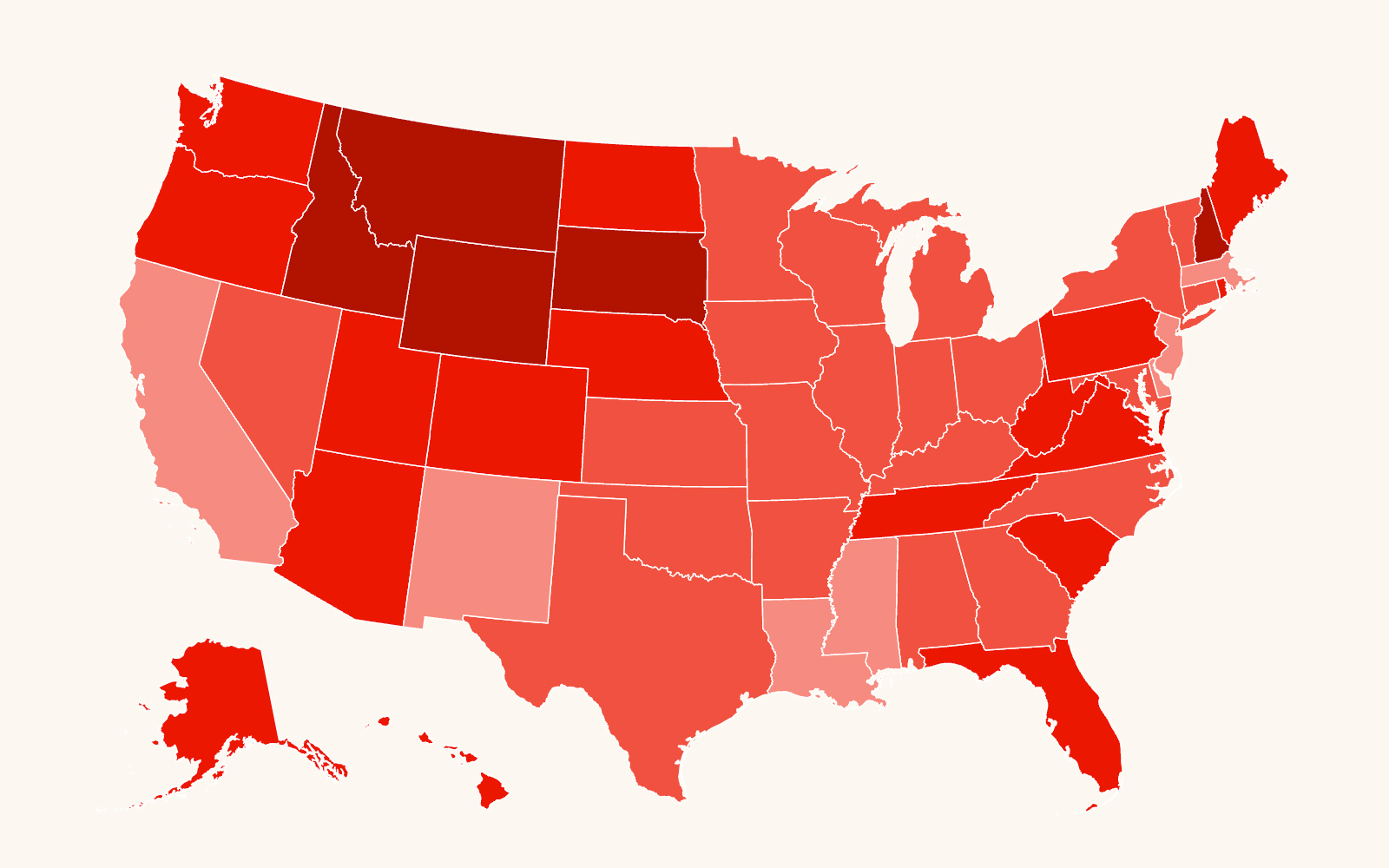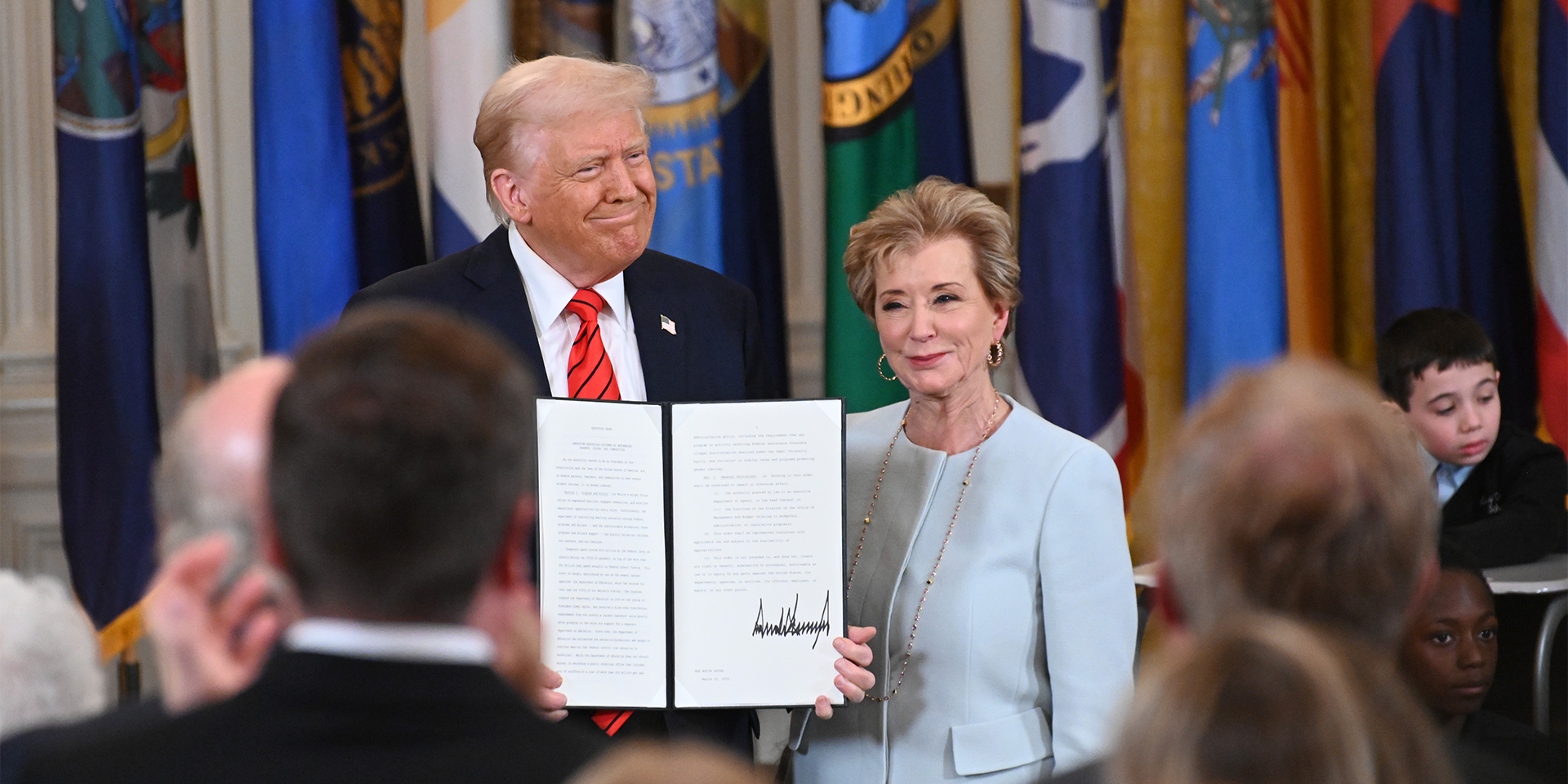In this article
- What does this executive order do?
- Tell Congress to stop efforts to shut down the Department of Education
- What are the core functions of the Department of Education, and which programs would be impacted by this executive order?
- How are Americans harmed by the dismantling of the Department of Education, especially in the Deep South?
- Is the executive order legal? How can we stop this action?
What does this executive order do?
This executive order states President Trump’s intention to shut down the U.S. Department of Education, which was established by Congress in 1979. At the same time, this executive order seeks to maintain the secretary of education’s power to withhold federal funding for certain educational activities as a mechanism to advance the Trump administration’s nefarious agenda to weaken civil rights laws and eliminate diversity, equity and inclusion efforts for students in public schools. Furthermore, this order frames this action as “returning control of education to the states,” but that is misleading because state and local school districts have always had the authority to determine and set education curriculum requirements.
The order would jeopardize the unique functions of the department, including overseeing funding for public schools, administering student loans, providing essential supports for low-income students and students with disabilities, and ensuring that every child in the U.S. has equitable access to a high-quality education in a safe, inclusive environment free from discrimination. This order likely transfers existing federal funding into block grants which are handed over to individual states — doing so removes any sort of accountability or oversight for how those dollars are spent. This order is happening alongside the Trump administration, Elon Musk, and the Department of Government Efficiency’s evisceration of the Department of Education with layoffs of nearly half the staff and the abrupt cancellation of $900 billion in contracts to key programs funded by the Department of Education.
Tell Congress to stop efforts to shut down the Department of Education
Trump has just signed an executive order attempting to shut down the Department of Education — gutting an essential service and cornerstone of our democracy.

What are the core functions of the Department of Education, and which programs would be impacted by this executive order?
The Department of Education establishes policy for, administers and coordinates federal financial assistance for education programs as well as protects the civil rights of students. In FY 2024, the department’s budget was $79 billion, most of which is directed to states — about $30 billion for Pell grants and $45 billion for elementary and secondary elementary education. Some key functions of the department include:
- Administering the Title 1 federal grant program that directs more than $14 billion a year to schools with high concentrations of students living in poverty and an insufficient local tax base to fund necessary programs. Title 1 grant programs provide funding for supplemental supports such as reading specialists and smaller class sizes. According to an analysis by the Center for American Progress, if Title 1 programs are eliminated, 180,000 teaching positions could be lost, directly harming 2.8 million students in low-income communities.
- Monitoring compliance and providing policy guidance to implement the Individuals with Disabilities Education Act (IDEA), which provides $15 billion to support students with disabilities. Roughly 7.5 million students, or 15% of the student population, receive special education under the IDEA. Closing the Department of Education would make it even harder for students with disabilities to receive the services and support they are guaranteed by law, need and deserve.
- The Education Department’s Office for Civil Rights plays a critical role in protecting students against discrimination based on race, gender and disability. The absence of strong federal oversight would leave millions of students vulnerable to discrimination, which has been shown to lead to lower levels of motivation, reduce inclusion in school instruction and activities and diminish academic achievement as well as an increased risk of being pushed out of school, including higher rates of referral to the criminal legal system.
- The Department of Education also administers federal funding streams such as Pell grants, federal student loans, and loan repayment and forgiveness programs which are intended to increase access to higher education. Thirty percent of U.S. college students rely on these federal loans to pay their tuition. Access to education can lead to increased employment opportunities and economic stability and mobility for individuals while also benefiting the overall economy. If federal financial assistance disappears, students will have reduced opportunities to seek out higher education — they may have to drop out, pause, or shelve their education plans, or have fewer school options due to affordability. Without the department, students and families are at risk of losing this crucial, life-changing economic tool.
How are Americans harmed by the dismantling of the Department of Education, especially in the Deep South?
Closing the department is disastrous decision that would gut funding for underserved students, result in increased class sizes, cut job training programs, make higher education more expensive and inaccessible, take away special education services for students with disabilities, and roll back protections of students’ civil rights.
Dismantling the department would exacerbate educational inequities, leaving underresourced schools with even less. There are 6.4 million students in public schools in Mississippi, Alabama, Georgia, Louisiana and Florida and thousands of Title I schools in the Deep South states. Our focus states consistently rank among the lowest in state and local public education funding. But at the same time, these states rely even more heavily on funding from the federal government compared to the national average of 13.7% of public K-12 education funding, or approximately $2,500 per student coming from the federal government.
MS: 23.2% of the state’s education funding, or about $3,000 per pupil, comes from the federal government
LA: 19.5% of the state’s education funding, or $3,300 per pupil, comes from the federal government
AL: 17.9% of the state’s education funding, or $2,600 per pupil, comes from the federal government
FL: 17.1% of the state’s education funding, or $2,400 per pupil, comes from the federal government
GA: 16.1% of the state’s education funding, or $2,600 per pupil, comes from the federal government
The closing of the department and defunding of core programs could lead to Deep South states experiencing a significant shortfall in education funding, as they would be unlikely to make up the difference and leave the most vulnerable students behind.[1]
This administration’s actions undermining public education, including the support for private school vouchers and the gutting of federal civil rights oversight, will resegregate public schools and limit access to quality education for Black and Brown students, low-income students, and students with disabilities. At least 13% of students in public schools have an IEP for a disability. Currently there are nearly 600 open investigations at the Department of Education SPLC’s focus states, with an overwhelming majority centered around disability discrimination.
Is the executive order legal? How can we stop this action?
The president does not have the authority to unilaterally shut down the Department of Education. Certain functions of the department are mandated under law to be maintained. For example, under Title IV of the Higher Education Act of 1965, the government is required to administer student loan programs, issue grants, and ensure the schools receiving federal money do not discriminate against students. Every year, Congress allocates billions through the appropriations process to the department, which it is obligated to spend on the designated programs. While the Impoundment Control Act of 1974gives the president limited authority to temporarily withhold congressionally approved funding, it does not allow President Trump and the executive branch to unilaterally cut off, rescind (impound) these funds, or terminate existing contracts which are drawing from previously appropriated funds. Illegal impoundments can also be in the form of mass firings of agency staff — whose salaries were budgeted from federally appropriated funds.
It’s ultimately Congress’ responsibility to safeguard our children from this draconian order. Congress can work to protect the department by rejecting any bill that terminates the Department of Education. They can strengthen the department’s core functions and fully fund it in upcoming budget negotiations. Contact your member of Congress NOW and urge them to reject efforts to abolish the Department of Education.
The SPLC is challenging efforts to weaken and defund public education systems, harm students of color, and other attacks on equal opportunities in education.
For more information, please visit Together We Fight or contact Theresa Lau.
Image at top: President Donald Trump poses with U.S. Education Secretary Linda McMahon on March 20 at the White House in Washington, D.C. Trump signed an executive order to formally begin dismantling the Education Department, saying that his administration is returning education back to the states. (Credit: Chen Mengtong/China News Service/VCG via Getty Images)
[1] See, Ed Trust, “Find Out How Much Federal Education Aid Your State Could Lose,” March 13, 2025. https://edtrust.org/rti/find-out-how-much-federal-education-aid-your-state-could-lose/



